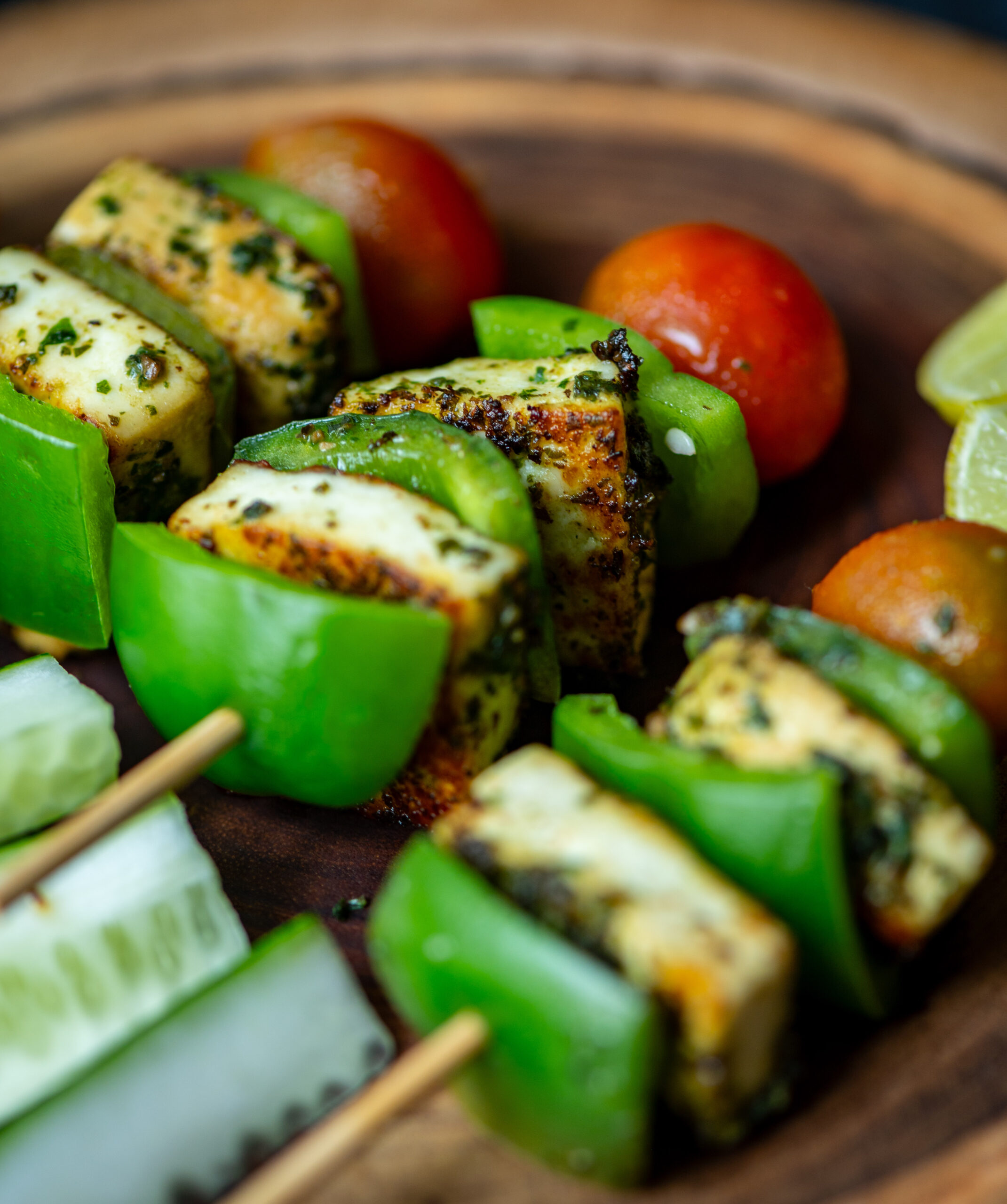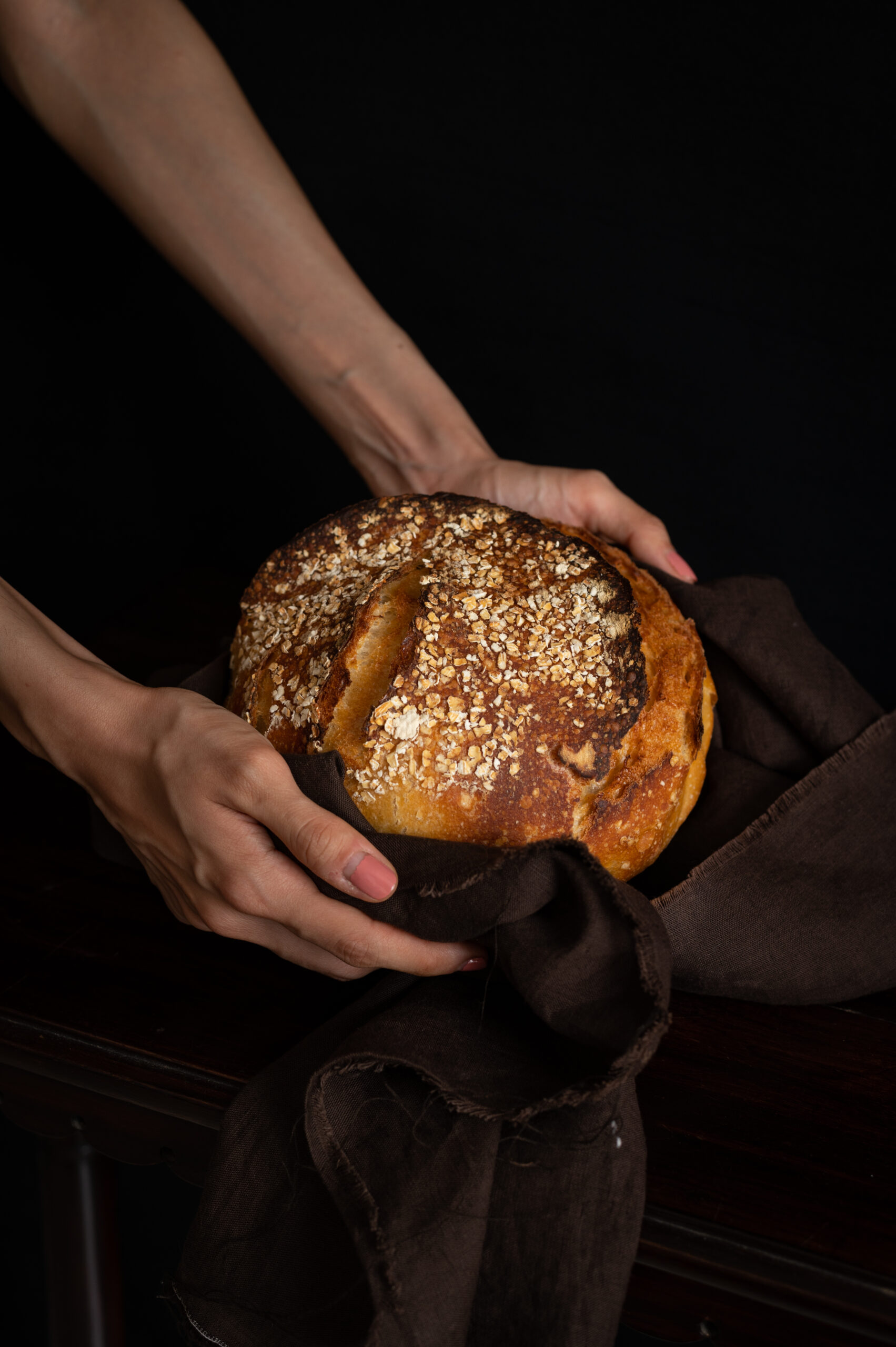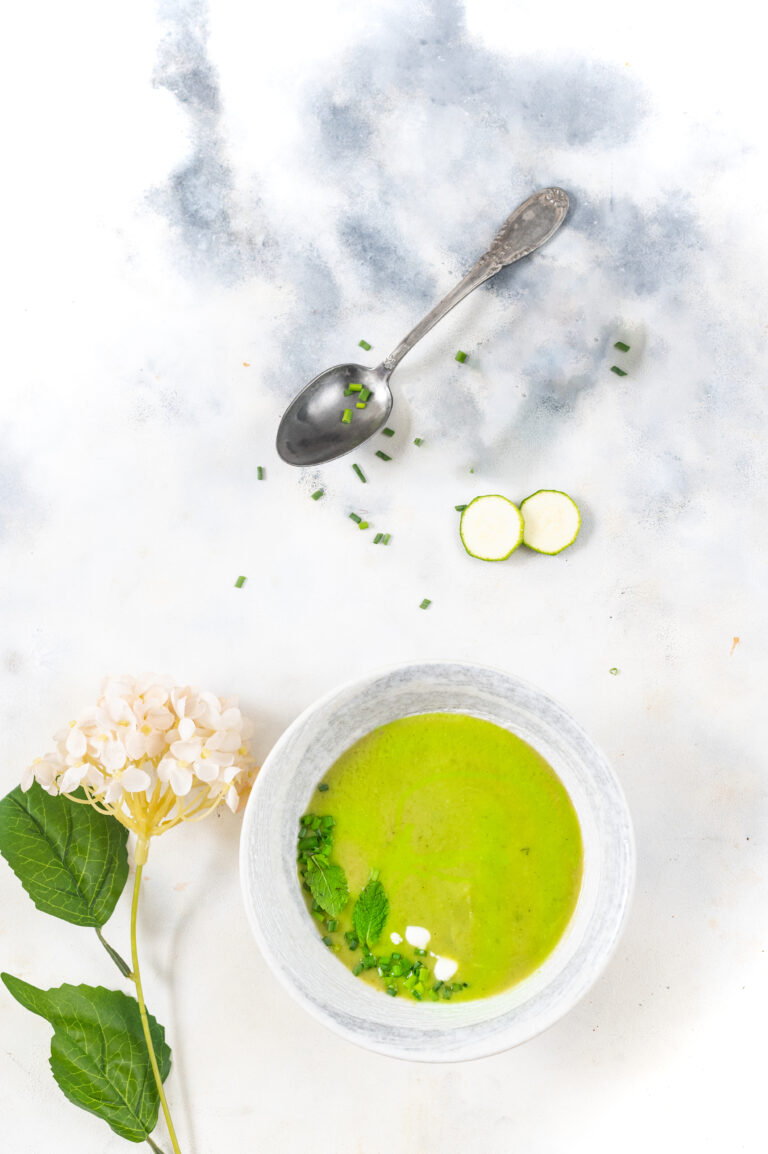Paneer is a great source of protein, especially for vegetarians (although unfortunately, not for vegans). It is an ingredient that is widely considered as being iconic of Indian cuisine. In fact, even within India I find that restaurants seem to offer fewer vegetables and greens on their menus and a wider variety of paneer options. This is probably because it is very versatile, and goes with any sauce or gravy. Personally, as much as I love it, I do reach out for paneer a bit less as it has a high fat content, and is made of dairy, which I find myself a little lethargic after consuming too much of. Which is easy to do, of course, given how delicious paneer is. As I’ve said before, all food is good within a limit. And this grilled pesto paneer, which is a fusion dish that further expands the possibilities of paneer, is very good indeed.
These paneer skewers make for a great appetizer and are a fun way to enjoy the ingredient as something other than a curry accompaniment to rice or breads. Another method you can try is making a paneer stir-fry with a pile of veggies, to be had as a meal in a bowl (this is quite a satiating breakfast).
When I decided to give basil-based pesto a go instead of the standard coriander, tomato or mint pairings that are typically used for paneer, and it turned out to be a hit at home. If you are a meat eater, this method will work just as well on chicken skewers too.
Using paneer and pesto together is a bit of a new innovation for me, even though I’ve been making the sauce for a long time and paneer for even longer. I struggled to make pesto initially, but have improved a great deal. I share this so that you don’t feel intimidated by it – many times, a recipe just takes practice. I have shared the recipe for this deliciously flavourful sauce earlier, and you can use the same one to prepare the grilled paneer. Here, it works as a marinade.
Of late, I have also been seeing a lot of basil in the markets in Chennai – both the Thai and Italian kinds. To be honest, I am not able to tell the difference on sight, but I ensure that I purchase the Italian basil when I am making pesto. I used to grow some at home too, but I haven’t been able to sustain that plant recently, so I am grateful that it is widely available.
An exciting discovery I made recently that I’d love to share with those of you in India is that I don’t have to buy imported pine nuts anymore. Pine nuts – a key ingredient of pesto – are grown in North India and are known in Hindi as chilgoza. A friend brought me some from Delhi and said they are quite easily available, and now that I know that I only need to ask for chilgoza, I’m going to stick to the regional variety for sure.
Pesto has recently found a notable place in my fridge as an always-there item, similar to my tomato purée. They are both multipurpose. They complement many dishes. The pesto in particular has a unique flavour and can be had in pasta, on toast, as a marinade and as a dip too. While I had been making it for quite a while as I said earlier, it only became a staple in my home when my son who lives in another city began to have cravings for it. He asked me to send it through visitors a few times recently, and I found myself making it a lot more frequently. Since there are so many ways to use it, it never goes to waste. Whether I’m tossing it into a main course or just dipping some cucumber or carrot sticks into it as a healthy snack, there are many reasons why it’s popular on a daily basis. It can also be a bit festive: this grilled pesto paneer is perfect for parties, or just for some novelty.

Grilled Pesto Paneer
(Serves 2-4)
150 grams paneer (cut into cubes)
2-4 tablespoons pesto
1 tablespoon olive oil
1 small bell pepper (cut in cubes)
Place the paneer in a wide bowl and add the pesto. Gently massage the paneer, making sure it gets coated. Set aside and allow to marinate for 20-30 minutes.
Pre-heat the oven on grill mode for 20 minutes.
Alternate the paneer and bell pepper cubes onto a skewer. Brush with olive oil. Repeat on more skewers.
Place the skewers on a tray and grill until they are well done. Flip and repeat on the other side.
You may wish to grill the paneer on a pan if you are not using an oven. In that case, put the cubes on the skewer after the pan-grilling is done and serve kebab-style.
Enjoy this grilled pesto paneer hot. I hope you’ll find this preparation exciting. If you are a fan of paneer in general, you may also want to explore a few other recipes I’ve shared that make use of this tasty and trusted ingredient.





























